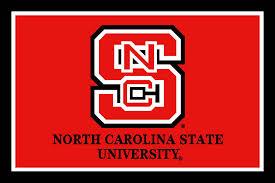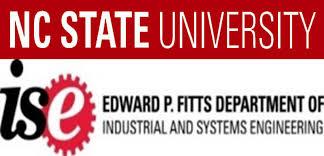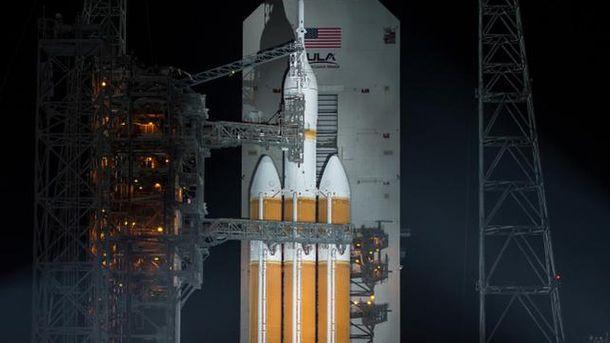 While North Carolina State University is known as a powerful educator regarding a number of disciplines, it’s most likely that in one stroll down Raleigh’s Hillsborough Street, you are rubbing elbows with an inordinately high percentage of future engineers. I don’t think I’ve heard of any of them going to space, though — and that goes for coinage as well.
While North Carolina State University is known as a powerful educator regarding a number of disciplines, it’s most likely that in one stroll down Raleigh’s Hillsborough Street, you are rubbing elbows with an inordinately high percentage of future engineers. I don’t think I’ve heard of any of them going to space, though — and that goes for coinage as well.
With the pride of a university and an entire state behind her, NCSU graduate Christina Hammock has begun training as a NASA astronaut. In what is undeniably one of the greatest privileges granted worldwide, she was chosen as one of eight individuals out of over 6,000 applicants. In another privilege, NCSU has been chosen to send an object into space for the unmanned Orion test mission launching from Kennedy Space Center this Friday. They have created a 3D printed commemorative coin bearing their university’s seal, which will be proudly displayed at the university after it completes its travel deep into space in the Orion capsule.
It’s no surprise that NCSU chose to send a 3D printed item to send into space. Not only is the university centered near one of the most technologically savvy areas in the country (Research Triangle Park), but NCSU has always been on the cutting edge in exposing their students to substantial new learning tools and integrating innovation, which is precisely why they, as a research institution, are a founding member — and only one of ten — of the National Institute of Aerospace. Due to this rank, NCSU was selected to send an item on the mission, and they, in an appropriate choice of respecting innovation and technology, used 3D printing in making a commemorative coin lauding their institution, as well as celebrating their alumna future astronaut.
 Created by the NCSU Department of Industrial & Systems Engineering, the 3D printing of the titanium money piece took 15 hours to complete, and was supervised by Rick Wysk, head of additive manufacturing research for the department. Professor Tim Horn, also a proponent of the innovations and benefits 3D printing offers to the world and space travel, helped with the project.
Created by the NCSU Department of Industrial & Systems Engineering, the 3D printing of the titanium money piece took 15 hours to complete, and was supervised by Rick Wysk, head of additive manufacturing research for the department. Professor Tim Horn, also a proponent of the innovations and benefits 3D printing offers to the world and space travel, helped with the project.
“If human kind is going to go to the stars, to the cosmos, we’re not going to be able to take everything with us — everything we’ll need along the way,” Horn said. “So you’re going to have to be able to make parts in outer space, and 3D printing offers that opportunity.”
 While the Orion mission launching this week is unmanned, it is meant to test out conditions for future missions which will be carrying astronauts like Christina far into unknown area of space. The Orion will be going into a two-orbit, four-and-a-half hour trip 3,600 miles away from Earth, testing conditions for sending our astronauts farther than ever, like Mars. These expeditions are perhaps only a bit more than a decade away.
While the Orion mission launching this week is unmanned, it is meant to test out conditions for future missions which will be carrying astronauts like Christina far into unknown area of space. The Orion will be going into a two-orbit, four-and-a-half hour trip 3,600 miles away from Earth, testing conditions for sending our astronauts farther than ever, like Mars. These expeditions are perhaps only a bit more than a decade away.
“If there are subtleties in how the vehicle behaves with the environments or subtleties with how systems actually behave with one another during flight, my hope is that we find that on this test flight,” said NASA Orion Program Manager Mark Geyer. “We want to discover things that are beyond our modeling capability and beyond our expertise so we can learn it and fix it before we put people on board.”
Christina Hammock, currently training in Houston, holds two bachelor of science degrees in electrical engineering and physics, as well as a master of science degree in electrical engineering. It’s interesting to note also that, according to NCSU statistics, for 2014 their first-year engineering class includes the highest percentage of female students in university history, at 25 percent, demonstrating an increase from 18 percent 5 years ago and 14 percent 10 years ago.
As one of many proud alumni of NCSU, I look forward to both to following Christina’s career and reporting on the 3D printing innovations coming from NCSU’s Department of Industrial & Systems Engineering.
Have you been following Orion’s launch? What are your thoughts regarding the impact of 3D printing and space travel, as well as colonization? Tell us about it in the NCSU 3D Prints Commemorative Coin forum at 3DPB.com.
Subscribe to Our Email Newsletter
Stay up-to-date on all the latest news from the 3D printing industry and receive information and offers from third party vendors.
You May Also Like
Profiling a Construction 3D Printing Pioneer: US Army Corps of Engineers’ Megan Kreiger
The world of construction 3D printing is still so new that the true experts can probably be counted on two hands. Among them is Megan Kreiger, Portfolio Manager of Additive...
US Army Corps of Engineers Taps Lincoln Electric & Eaton for Largest 3D Printed US Civil Works Part
The Soo Locks sit on the US-Canadian border, enabling maritime travel between Lake Superior and Lake Huron, from which ships can reach the rest of the Great Lakes. Crafts carrying...
Construction 3D Printing CEO Reflects on Being Female in Construction
Natalie Wadley, CEO of ChangeMaker3D, could hear the words of her daughter sitting next to her resounding in her head. “Mum, MUM, you’ve won!” Wadley had just won the prestigious...
1Print to Commercialize 3D Printed Coastal Resilience Solutions
1Print, a company that specializes in deploying additive construction (AC) for infrastructure projects, has entered an agreement with the University of Miami (UM) to accelerate commercialization of the SEAHIVE shoreline...






























